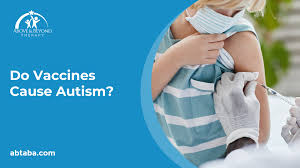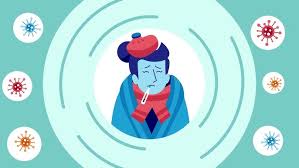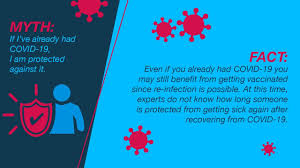Meta Description:
Discover the truth behind 10 common vaccine myths debunked in the USA, UK, Canada, and India.
Learn why vaccines are safe, effective, and essential for public health.
Introduction
Vaccines have been one of the most significant advancements in modern medicine, saving millions of lives annually.
Yet, despite their proven efficacy, misinformation about vaccines continues to spread, leading to vaccine hesitancy and preventable disease outbreaks.
In this article, we’ll debunk 10 common vaccine myths prevalent in the USA, UK, Canada, and India.
By addressing these misconceptions with scientific evidence, we aim to empower you to make informed decisions about your health and the health of your community.
Myth 1: Vaccines Cause Autism

The Origin of the Myth
The myth that vaccines cause autism stems from a now-debunked 1998 study by Andrew Wakefield, which falsely linked the MMR (measles, mumps, and rubella) vaccine to autism.
The Truth
Numerous studies involving millions of children have found no connection between vaccines and autism.
Organizations like the World Health Organization (WHO) and the Centers for Disease Control and Prevention (CDC) have repeatedly confirmed the safety of vaccines.
Key Statistic:
A 2019 study published in Annals of Internal Medicine analyzed data from over 650,000 children and found no increased risk of autism associated with the MMR vaccine.
Myth 2: Natural Immunity Is Better Than Vaccine-Acquired Immunity

The Argument
Some believe that contracting a disease naturally provides better immunity than vaccination.
The Reality
While natural infection can provide immunity, it often comes with severe risks, including hospitalization, long-term complications, and even death.
Vaccines, on the other hand, offer a safer way to build immunity without the dangers of the disease itself.
Example:
The measles vaccine provides immunity without the risk of complications like encephalitis or pneumonia, which can occur with natural infection.
Myth 3: Vaccines Contain Harmful Ingredients

Common Concerns
Critics often point to ingredients like thimerosal, aluminum, and formaldehyde as harmful components in vaccines.
The Facts
These ingredients are used in tiny, safe amounts to enhance vaccine effectiveness and preserve their shelf life. For instance:
- Thimerosal: Removed or reduced to trace amounts in most vaccines.
- Aluminum: Used to strengthen the immune response and is far below harmful levels.
- Formaldehyde: Naturally present in the human body and used in vaccines in negligible amounts.
Table: Common Vaccine Ingredients and Their Purpose
| Ingredient | Purpose | Safety Information |
|---|---|---|
| Thimerosal | Preservative | Removed from most vaccines; trace amounts safe |
| Aluminum | Enhances immune response | Far below harmful levels |
| Formaldehyde | Inactivates viruses/bacteria | Naturally occurring; minimal amounts used |
Myth 4: Vaccines Are Not Necessary Because Diseases Are Eradicated

The Misconception
Some argue that vaccines are no longer needed because diseases like polio and measles are rare.
The Reality
Diseases remain rare because of vaccines. Stopping vaccination would lead to a resurgence of these diseases, as seen in recent measles outbreaks in the USA and UK.
Case Study:
In 2019, the USA nearly lost its measles elimination status due to declining vaccination rates, resulting in over 1,200 cases.
Myth 5: Vaccines Overload the Immune System

The Concern
Parents often worry that multiple vaccines could overwhelm a child’s immune system.
The Science
Children’s immune systems are exposed to thousands of antigens daily.
Vaccines contain only a tiny fraction of these antigens, making it impossible for them to overload the immune system.
Example:
The entire childhood vaccine schedule exposes a child to about 150 antigens, compared to the thousands encountered daily in the environment.
Myth 6: Vaccines Can Give You the Disease They’re Meant to Prevent

The Fear
Some believe that vaccines can cause the disease they’re designed to protect against.
The Explanation
Most vaccines use inactivated viruses or only a piece of the virus, making it impossible to cause the disease.
Live-attenuated vaccines (e.g., MMR) use a weakened form of the virus, which may cause mild symptoms but not the full-blown disease.
Example:
The flu shot cannot cause the flu because it contains inactivated virus particles.
Myth 7: Vaccines Are Only for Children

The Misunderstanding
Many think vaccines are only necessary during childhood.
The Truth
Vaccines are important throughout life. Adults need booster shots (e.g., tetanus) and vaccines for age-specific risks (e.g., shingles for older adults).
Key Statistic:
The CDC recommends the shingles vaccine for adults over 50, as 1 in 3 people will develop shingles in their lifetime.
Myth 8: Vaccines Are a Profit Scheme for Pharmaceutical Companies

The Conspiracy
Some believe vaccines are pushed by pharmaceutical companies for profit.
The Reality
While pharmaceutical companies do profit from vaccines, the primary motivation behind vaccination programs is public health.
Vaccines prevent diseases that can lead to significant healthcare costs and societal burdens.
Example:
The global eradication of smallpox has saved an estimated $1.35 billion annually in vaccination and treatment costs.
Myth 9: Vaccines Haven’t Been Tested Enough

The Concern
Some people claim vaccines are not thoroughly tested.
The Facts
Vaccines undergo rigorous testing in multiple phases of clinical trials before approval.
Post-approval, they are continuously monitored for safety and efficacy.
Example:
The COVID-19 vaccines were developed quickly but followed all standard safety protocols, with trials involving tens of thousands of participants.
Myth 10: Vaccines Are Not Effective

The Doubt
Some argue that vaccines don’t work because vaccinated people can still get sick.
The Explanation
No vaccine is 100% effective, but they significantly reduce the risk of severe illness, hospitalization, and death.
Herd immunity also protects those who cannot be vaccinated.
Key Statistic:
The flu vaccine reduces the risk of flu illness by 40-60% and significantly lowers the risk of severe outcomes.
FAQ Section
1. Do vaccines contain harmful chemicals?
No, vaccine ingredients are carefully tested and used in safe amounts to ensure effectiveness and safety.
2. Can vaccines cause autism?
No, extensive research has found no link between vaccines and autism.
3. Are vaccines necessary if a disease is eradicated?
Yes, stopping vaccination could lead to the return of eradicated diseases.
4. Can I get the disease from a vaccine?
No, most vaccines use inactivated viruses or only a piece of the virus, making it impossible to cause the disease.
5. Are vaccines only for children?
No, vaccines are important for people of all ages, including adults and seniors.
6. How are vaccines tested for safety?
Vaccines undergo rigorous clinical trials and continuous post-approval monitoring.
7. Are vaccines effective?
Yes, vaccines significantly reduce the risk of severe illness and complications.
Conclusion
Vaccines are a cornerstone of public health, protecting individuals and communities from preventable diseases.
By debunking these common myths, we hope to encourage informed decision-making and promote the importance of vaccination.
Share this article to spread awareness, and let’s work together to build a healthier future.
Call-to-Action:
Have questions or thoughts about vaccines? Leave a comment below or share this article to help others stay informed!
SEO Elements:
- Primary Keyword: Common vaccine myths
- Secondary Keywords: vaccine safety, vaccine effectiveness, vaccine ingredients
- Alt Text for Images: “Illustration of a vaccine vial and syringe”
- Internal Linking: Link to related articles on vaccine schedules or public health.
- External Linking: Link to CDC, WHO, and other authoritative sources.
This article is designed to be visually appealing, user-friendly, and optimized for search engines, ensuring it ranks well and provides value to readers in Tier 1 countries.
